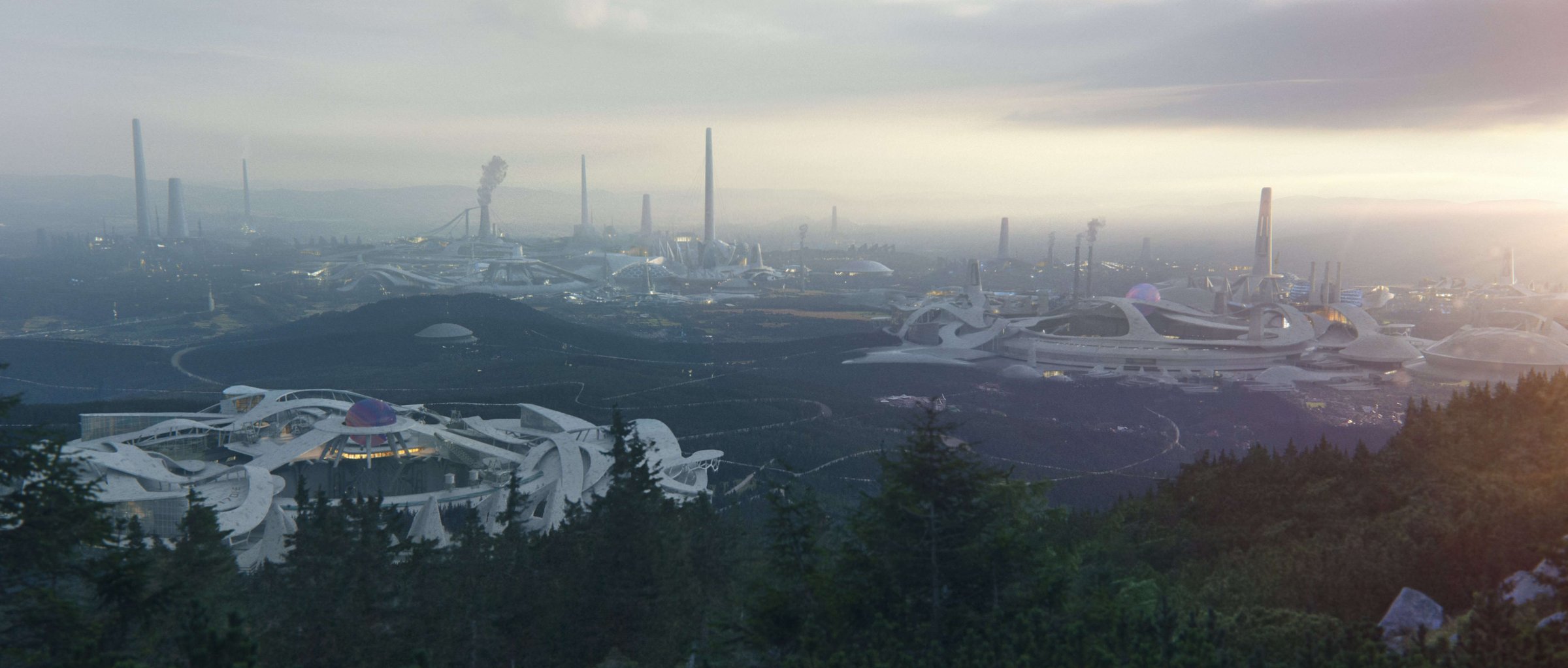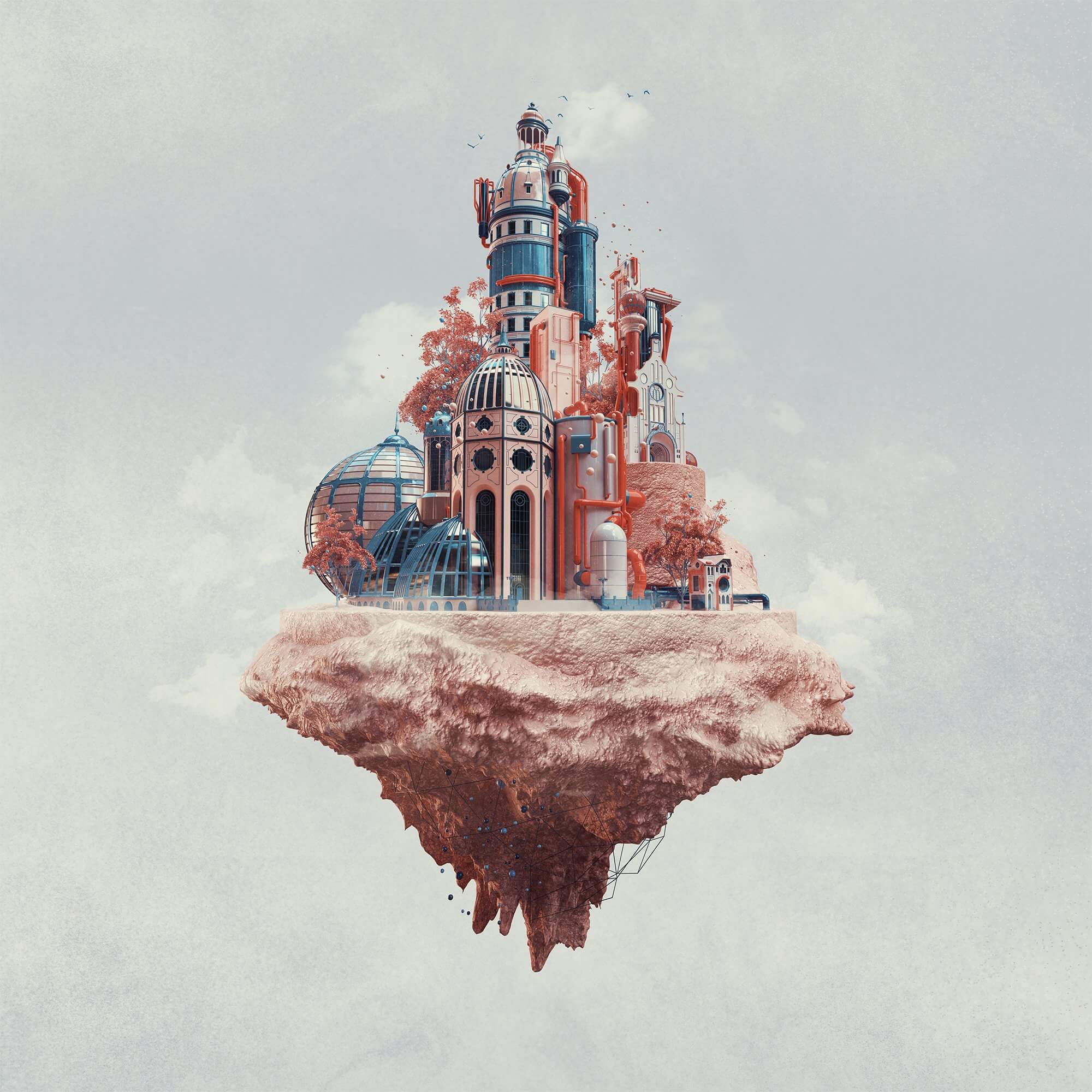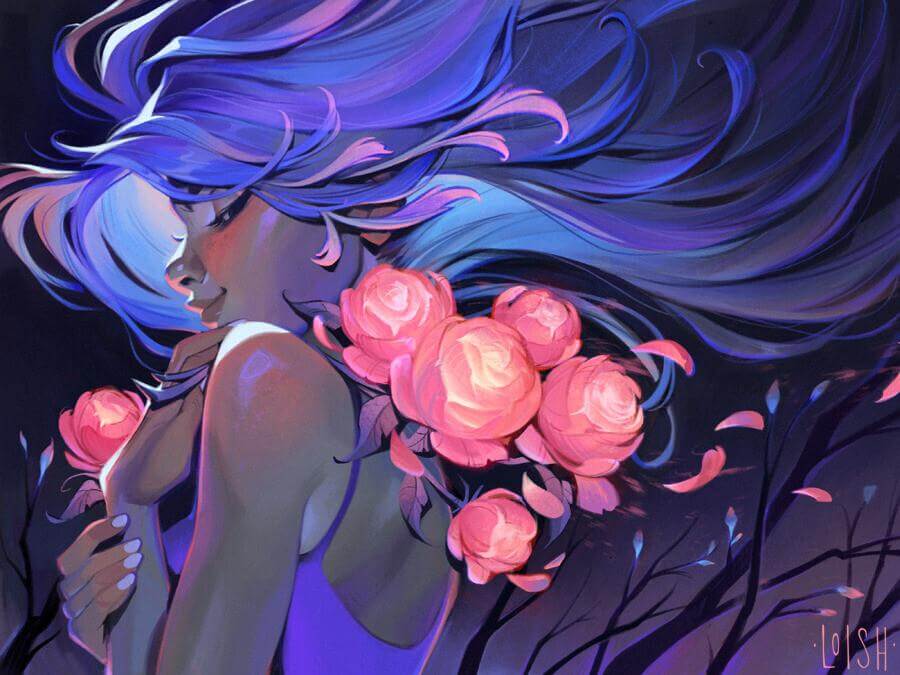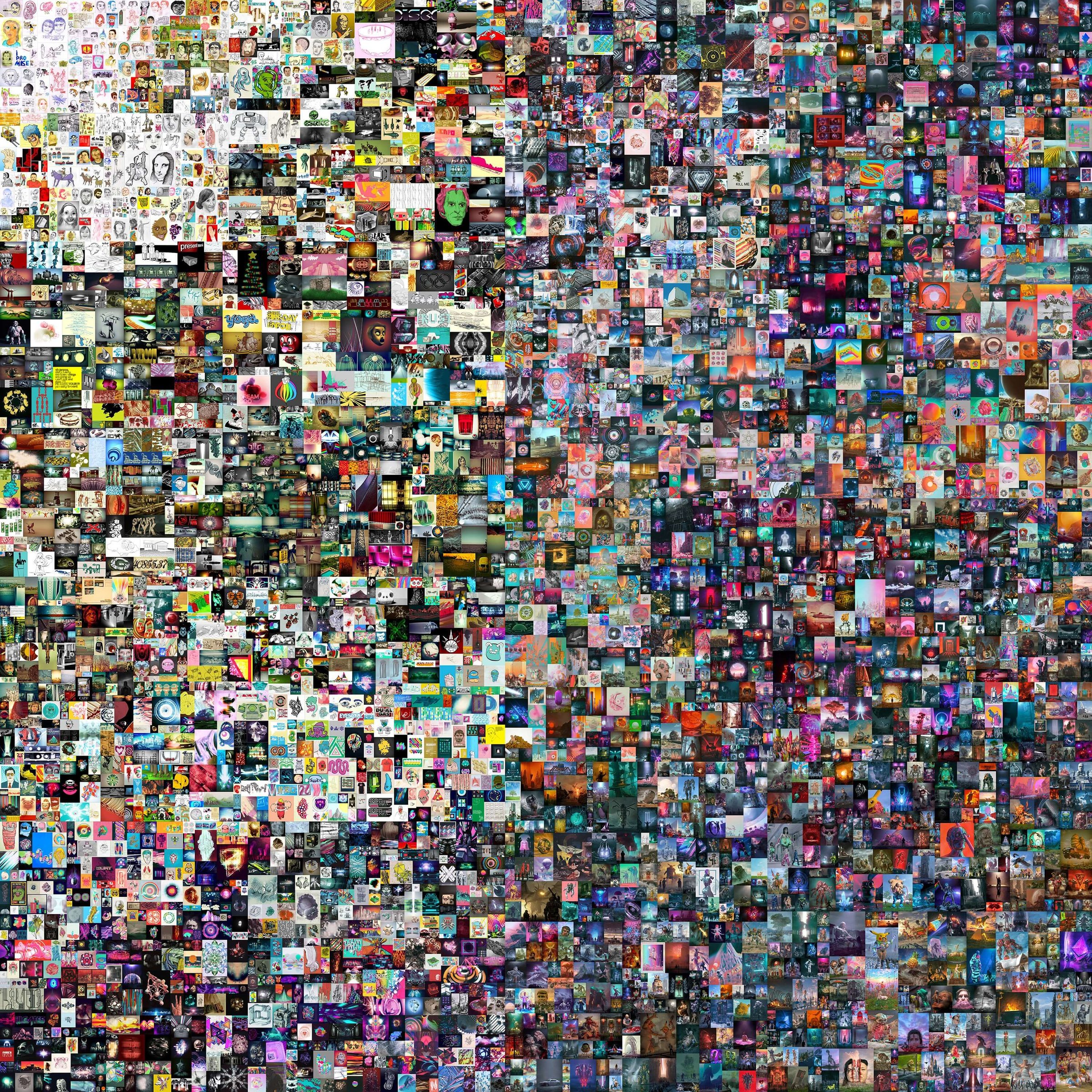How Irena Šmitáková Transformed a Vacation Photo into a Sci-Fi Spectacle
There are many ways to approach working in 3D: Some artists execute everything start-to-finish in Blender, and others, like Irena Šmitáková, use Photoshop as their key compositing tool. Luckily, there’s no “right” way to get involved in 3D – and whether you’re a photographer considering getting started or a 3D artist looking to expand your skill set, Irena is full of valuable insights. But before we jump into her creative process breakdown, let’s see where her artistic journey has taken her thus far!
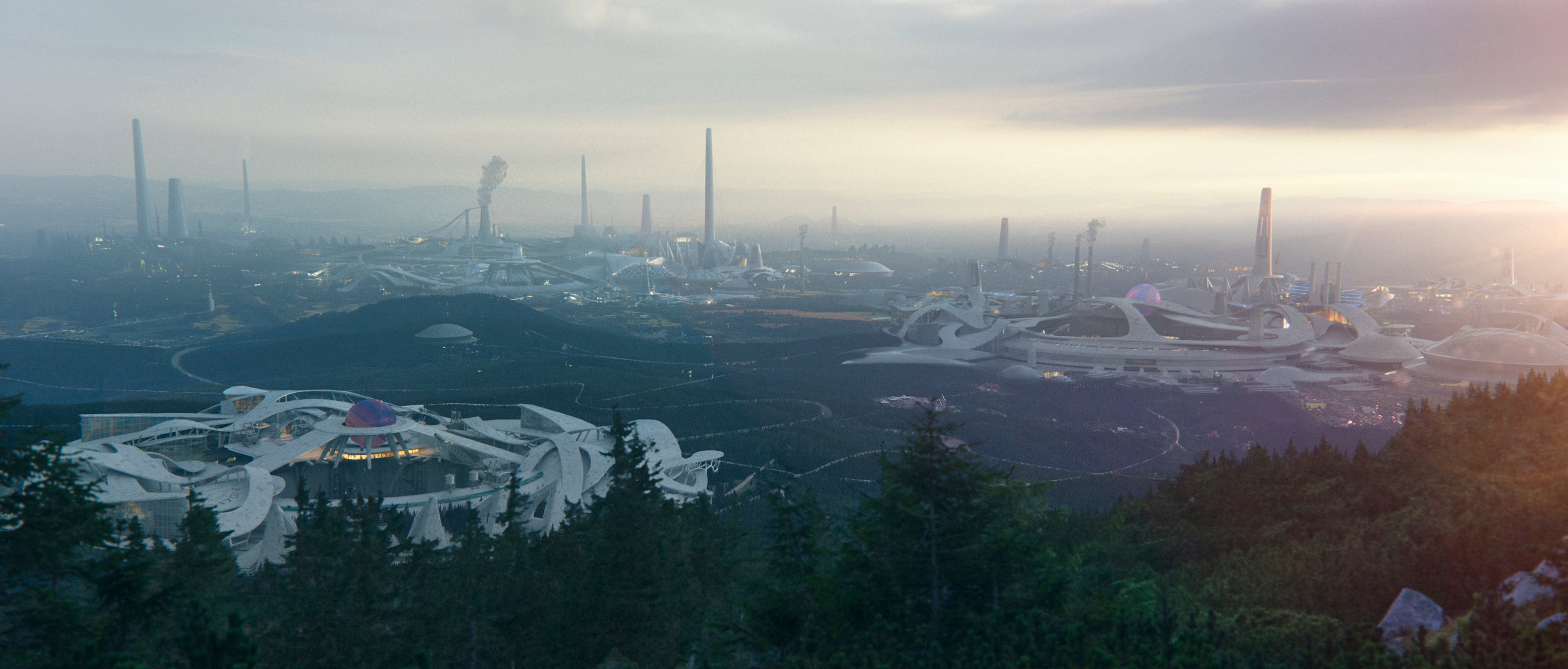
KitBash3D: Irena, thank you for joining us today and being a longtime member of the KitBash3D community. Would you mind introducing yourself and providing some context on how you got to where you are today?
Irena Šmitáková: I am Digital Matte Painter and Environment Artist currently working at Framestore London, a visual effects company and creative studio, and I have worked on projects such as The Lion King, Call of the Wild, Artemis Fowl, Good Omens, Rebecca, and others. I am originally from Czech Republic and I have been interested in art since 2007. Thanks to my friend, I discovered my huge interest in photography, so I first joined DeviantArt, and I started studying photography and applied media in 2009.
As the years of studying went by, I was more interested in moving pictures rather than stills, so I did a lot of experiments with filming documentaries, stop motion, and filming short stories with my friends. It still wasn’t fulfilling me, so I was trying out even different disciplines like graphic design, web design, producing music, etc. The thought of doing VFX, which occurred to me after seeing Pacific Rim, used to be just something I thought would be cool to do – I never actually thought I would be actually doing it as a job one day. Long story short, it was a very long journey before discovering and learning matte painting and environment design.
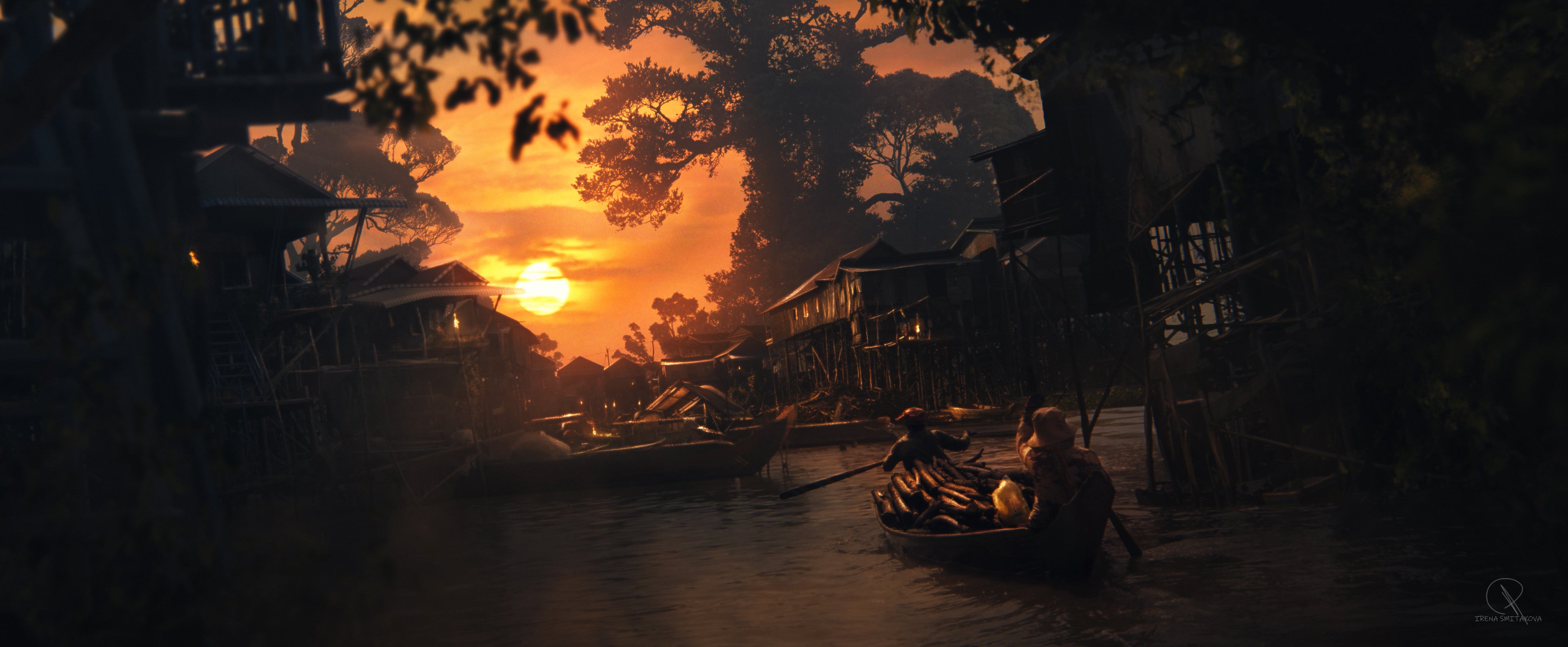
KitBash3D: We all have to start somewhere, and it’s really interesting to see where different 3D artists got their start. Many seem to have quite varied backgrounds! So, when did your professional career kick off?
Irena: My whole VFX professional journey started back in July 2017 during my time at University of South Wales. At the beginning of my studies I set myself a goal that after my second year I would get my first VFX job so I would be able to get as much experience as possible before finishing university. After sending out tons of applications and receiving tons of rejections, there were 2 studios who replied and interviewed with.
One of those was Animortal Studios, which I joined as a Junior Compositor. I am super grateful to VFX supervisor Chris Callow and director Mike Mort for seeing potential in me and for giving me the opportunity to create matte paintings for a film we worked on.
At the end of third year on our graduation show, Tamsie Thomas, former Head of 2D at Milk VFX in Cardiff, saw my demo reel and invited me for an interview. I was super happy and got to work with amazing colleagues who helped me land at MPC, where I got to work on The Lion King.
I have great and super fun memories from all the years I have been in VFX and gratitude for the people I got to work with. The team you are surrounded by is a very crucial part of being at any studio.

KitBash3D: Awesome to see you be part of something like that. Can you share more about what you’ve learned and what your creative process for professional or personal work is like?
Irena: I always first try to visualize in my head what I want to achieve, but the process for both is quite different. Professional tasks are more narrowed. You have to always listen to what the client wants and sort out the technical part of the process to ensure you meet the deadline. On top of that, it’s often difficult to read a client's mind, haha. Over the years working at studios, I’ve used software like Photoshop, Maya, Nuke, Houdini, SpeedTree, Zbrush, and Katana.
With personal work, there is more freedom, and, mainly, more time. I am the creative director, supervisor, artist and storyteller, so I have more time to think about what step I’ll do next or whether I’ll add more dirt on the rock or not. I also usually get inspired by seeing photography, film, or Instagram artwork posts for an initial idea. And soundtracks, which often help me to get into a creative flow too.
I like experimenting with new ways of doing my personal work so the process changes. Now I am focusing a lot on large scale CG environments integration into 2D plates, using Houdini and Clarisse. It is important to have everything prepared in advance, like photo references, textures, even build base shaders separately so later in the process you can start cooking. Definitely try to always prepare as much as you can in advance; it is a time saver.
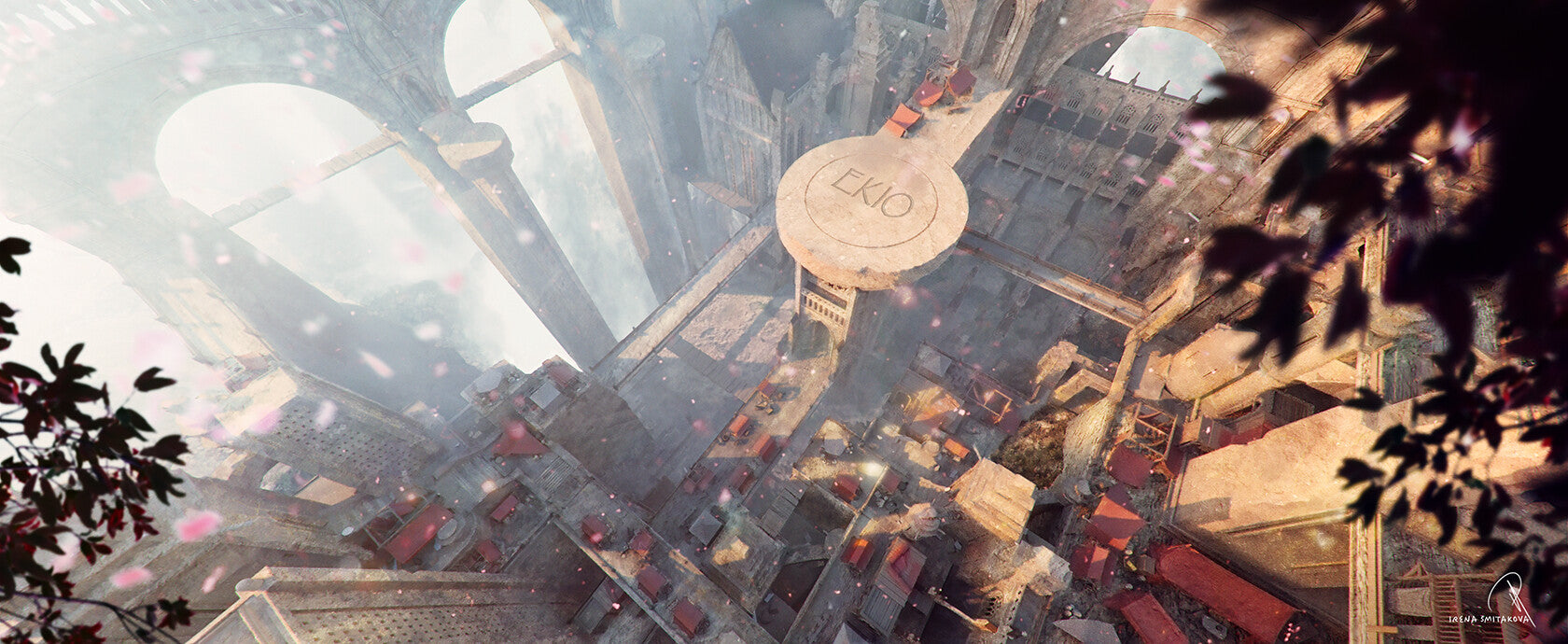
KitBash3D: You’ve mentioned your “Every Kit I Own” (EKIO) personal work series. Can you talk more about that?
Irena: The inspiration for it came from a conversation with a friend about Simon Stalenhag’s series of paintings. I thought I would like to start doing my own series, and what came into my mind was to create a series of environments with KitBash3D kits and try different techniques while doing it – that way I could practice something I know and learn something new with each piece.
The first EKIO was inspired by my trip up Snezka Mountain with my sister. On our way up there, we were standing in front of this Polish valley and the visuals and questions just came into my mind ‘’How will this valley look like in the future?’’ To add to this, I am a huge lover of abandoned places, these places are full of stories on their own, even without any people.
KitBash3D: Can you walk us through creating that first piece?
Irena: I researched references and used my own photobase that I took on the trip, and I imagined these mines full of experimental facilities. I thought the best thing would be to use KitBash3D’s Utopia kit, as it has these nice futuristic curvy shapes. I did few color-grade adjustments, but very subtle, I didn’t want to change the atmosphere of the photo I took.
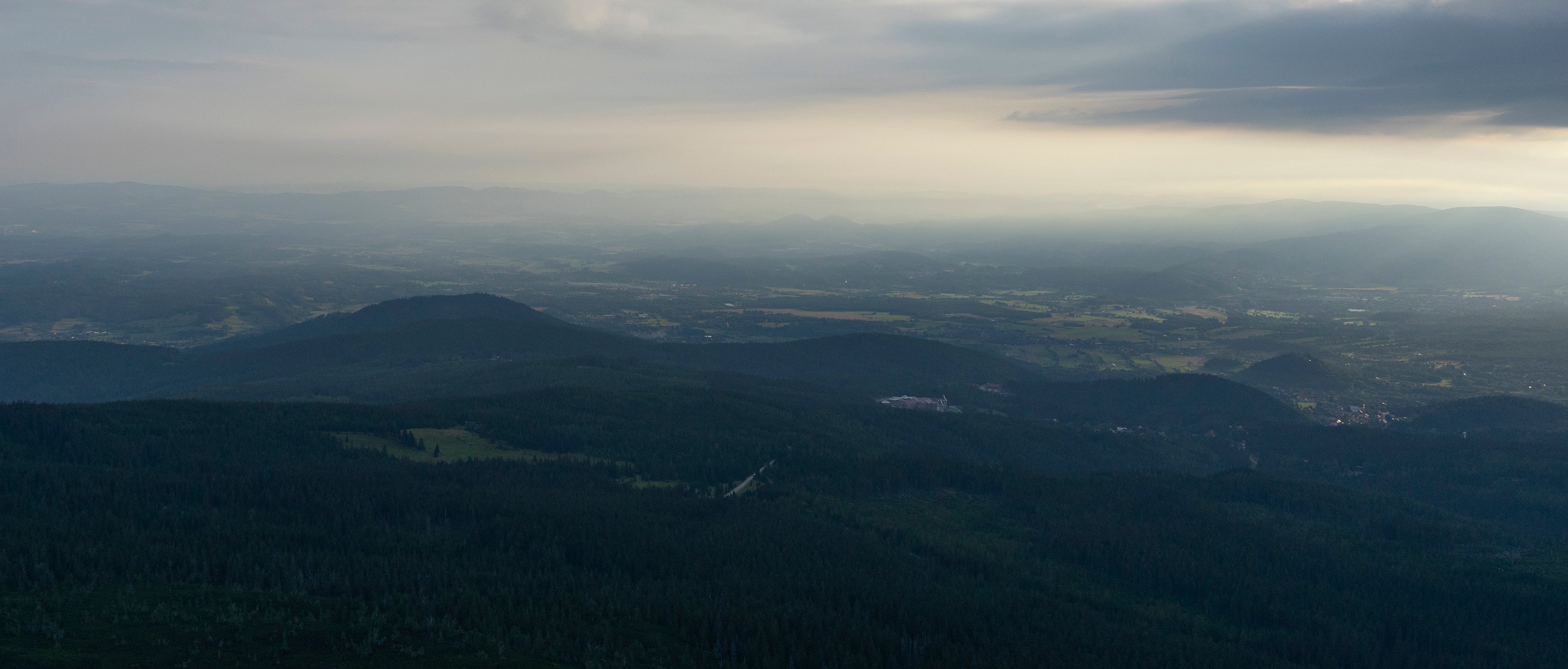
Irena: I created a quick sketch for me to better visualize how this scene could approximately look. I sometimes sketch on paper, but for a type of sketch like this, Photoshop is more flexible.

Then the experiments started. Playing with KitBash kits, obviously the huge advantage is that it all is pre-modeled, though I did model the base for the mine. I grabbed individual pieces and started layering, scaling up and down, and often the best result is just a happy accident. (Tip: Remember that if you are scaling the kit in only 1 axis, you need to adjust the UVs.)
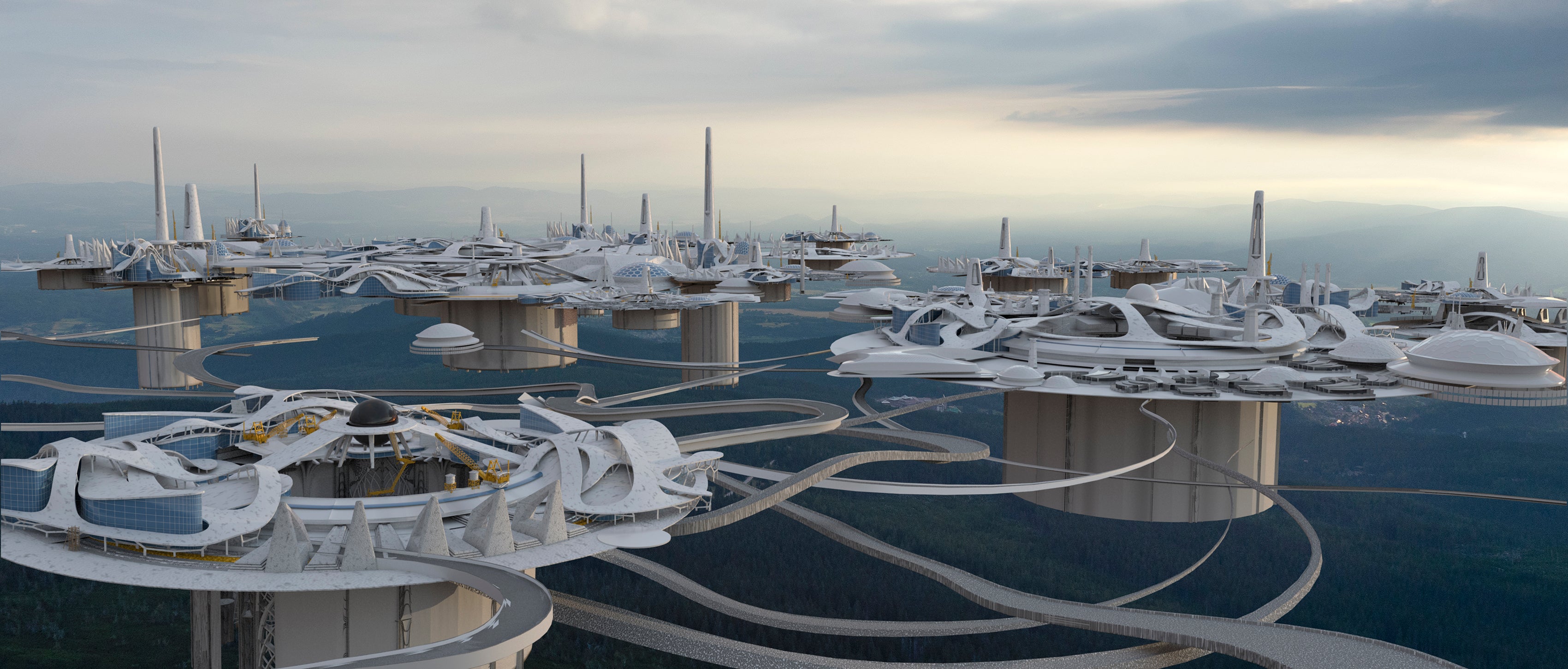
After I finished my base layout, I applied base HDRi and key light. I knew I would be doing most of my lighting and grading in Photoshop, so I didn’t have to match the light and atmosphere of the photo exactly.
I was constantly jumping between Photoshop and Maya to check how the CG looks when it’s roughly comped in. Once I felt I wanted to push this further, I rendered out my passes and started comping and grading the shot in Photoshop.
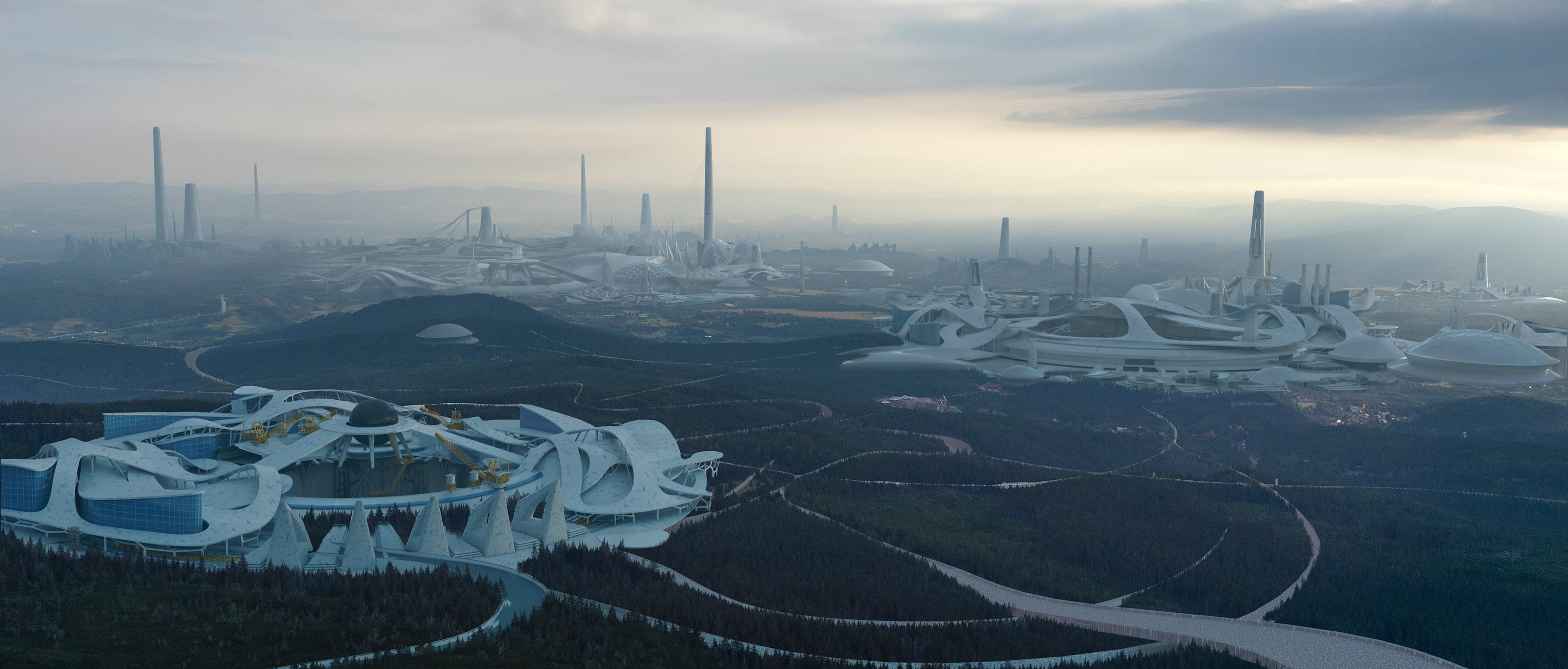
I felt like something was missing in the foreground, which I resolved by grabbing another reference I collected on my trip and comped it in. To make the artwork more ‘alive’, I used cryptomatte (id masks), and started adjusting the lighting on each individual part of the artwork. This helped the overall believability and it created a very nice effect. I kept layering up the textures, like adding interiors, window lights and very subtle texture details onto the architecture.

Once I was done with this, only a few adjustments needed to be made, like the foreground trees, grade of some parts of the scene to make sure it matches the sunrise atmosphere, and I punched up the sunlight a little bit to make it a bit more interesting. I tend to use an additional layer of sun lens flare to give it more effect.
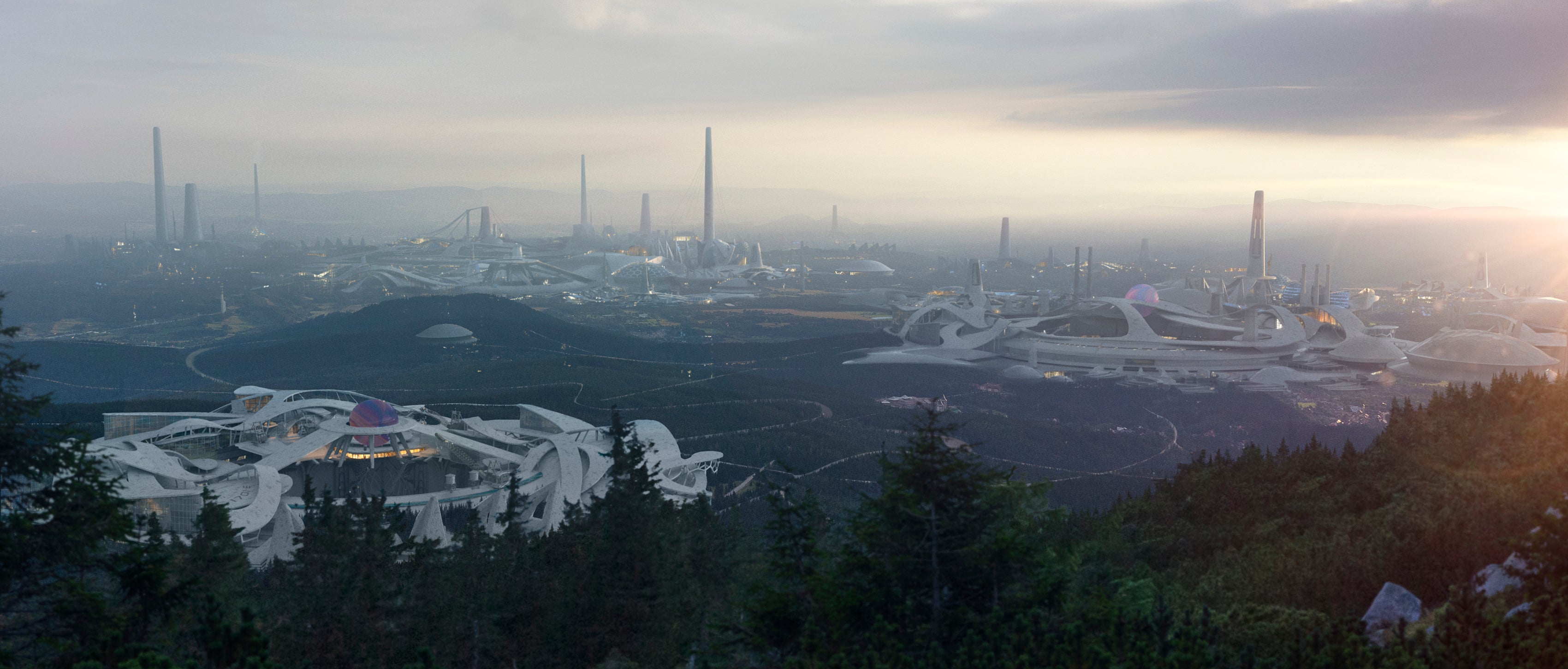
Lastly I added effects like smoke, lens distortion, and additional subtle grain to connect these elements together and make sure the final grade looks exactly how I want. My last recommendation, work zoomed-in!

KitBash3D: Thanks for sharing! It’s very cool to see some of our models photoshopped into real world scenes. What motivates you to create images like this?
Irena: Art helps me to turn off and relax, whether it’s matte painting, photography, sketching on paper or even modeling practice. I like storytelling through a single visual, it’s unbelievable how much you can tell in a single image, plus there are so many different ways of how to convey a story.
What inspires me is the motivation and dedication I see in my close circle. I feel super grateful for them. I think I am not alone saying as an artist or even someone working in another industry, that COVID made me rethink some of my values and what is important in my life. I don’t rush myself anymore and in the last few months I have learned to be more mindful and build my borders as an artist as for how long I want to spend working and how much time I want to spend enjoying my personal life.
KitBash3D: Thank you, that’s great to keep in mind, and we look forward to seeing more of your EKIO series in the future! Is there anything else you would like to say to the community before we sign off?
Irena: Always look for work / life balance. Sometimes, very often at the early stage of our career, you may think you are immortal, but it takes some amount of care for it to last. Set your dream and goal, take breaks, don’t give up, learn to be mindful, read, get feedback, be open to learning and mainly believe that you can do it. And remember, how many paintings do you think Picasso had to paint before he became master?
About Irena Šmitáková
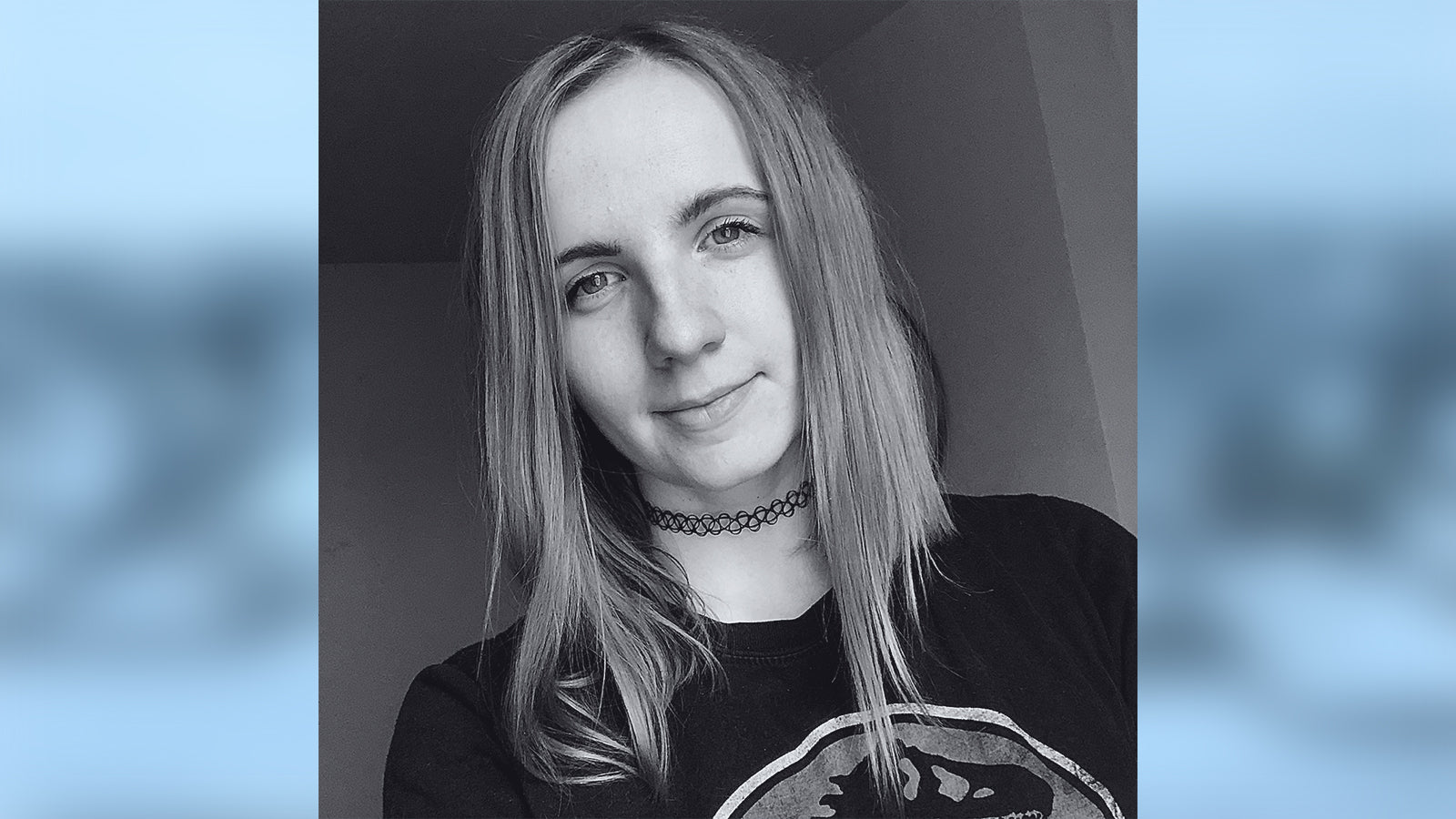
Irena is a Digital Matte Painter, Environment Generalist, and freelance Concept Artist working for the Film and TV industry. She joined the VFX industry in 2017 and has had the opportunity to work on amazing projects like The Lion King, Call of the Wild, Artemis Fowl, and Good Omens. You can check out her website, Instagram, and ArtStation for more of her work.
Irena is inspired by Maxx Burman, Steven Corman, Dylan Cole, Karla Ortiz, Loish, John Sweeney, Anthony Efthekari, Mark Maggiori, Yoichi Nishikawa, Simon Stålenhag, and many more.

